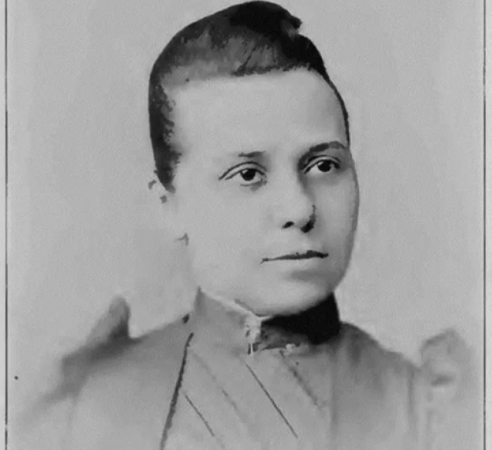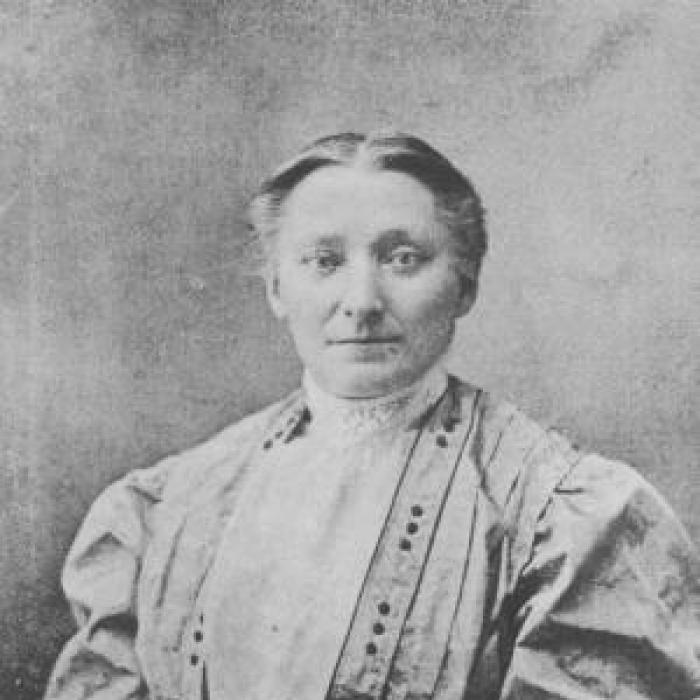A professor shared the great contribution of two American female missionaries to the deaf and the blind in China.
On September 24th, a lecture titled “The School Education for the Deaf and Blind in China: The Legacy of Mary Niles and Annette Thopson” was held as a part of the Zhang Kaiyuan lecture series, which was organized by the Zhang Kaiyuan Cultural Exchange Foundation.
Sharing topics including the history of Christianity in China, women’s issues and charity, Professor Ellen Widmer (Wei Ailian), a famous sinologist and professor of Song May-ling Institute of Chinese Studies, began by introducing two female figures: Mary W. Niles and Annette E. Thopson. Then Widmer went on to present their two pioneering ministry models; geographical divisions between south and north, Guangdong (Canton) and Shandong; and the similarity in their ministry contributions, the deaf and blind.
The professor also showed that special education had high professional demands because Braille was not a specific text but a set of touchable “points” to convey information. Widmer’s report also witnessed how female missionaries were engaged in special education as well as their contributions, which had historical value and practical significance.
She said, “I think this is a very meaningful academic activity.” She hoped to let everyone know how American Protestants helped China in the early days, which involved the contribution of female missionaries.
During the lecture, Professor Widmer, by using slides online, told similarities and differences in the work of the two female medical missionaries and their contributions to Chinese society.
“The birth and death of Mary Niles and Annette Thopson were all in China. They stayed in China for about 43 to 46 years. In 1889, Niles established a deaf and blind school in Guangzhou. In 1887, Thopson founded a school for the deaf in Zhifu, Yantai, Shandong. Their two institutions faced severe local challenges, pestilence, civil strife, xenophobia, and the war against Japan. At that time, methods of medical treatments for deaf and blind people had emerged in Europe, and Helen Keller (author of the book Three Days to See) benefited from the development of medical technology.”
“Niles’ uncle was a medical missionary. Her father was a medical missionary and she received medical training in genecology and obstetrics. Women’s medical work in Guangzhou started before she was born. The job was done by men in those days, and later more and more women could participate. She used to travel around community blocks in a sedan chair at night to pick up pregnant women who were going to give birth,” she added.
She gave examples, “Niles found that at that time many blind girls were decorated with bright flowers, and they were led by an older woman to somewhere to sing and would not come back until the next morning. She opened the obstetrics and genecology clinic to the public. The third child she adopted was found from ashes. She adopted four children in total. Later, she gradually started to establish schools for the deaf, providing a platform for orphans and deaf and blind people who were used as prostitutes to study and change their destiny.”
In particular, Professor Widmer mentioned that Niles could communicate in Braille, and the way she worked hard to learn the language of the blind was amazing. She edited Cantonese and the sign language of the blind into a system. Her family was raising money in America at that time, and the Presbyterian Church in her hometown began to support her ministry. Thopson came to China as an experienced girl. In 1876, she learned lip-reading language and sign language. Niles began to provide guidance to deaf people in Dengzhou, Shandong Province. At that time, Chinese people misunderstood her behavior and thought that deaf people were incapable of learning. Finally, her teaching was successful, which changed Chinese people’s cognition.
Thopson tried to study the languages for the blind and the deaf in Cantonese and set up courses. When she was delivering courses, she learned Chinese by using flashcards. At the same time, she also taught local teachers how to teach deaf and blind people to learn.
The professor concluded that as a medical missionary, Niles adopted children and founded schools, and used to often quote the Bible; Thopson, with rich experience and strong specialty, established a course to teach deaf people.
Niles tended to recruit female students by adopting children and beggars as students. Thopson’s students were not beggars. She needed students with good financial conditions and preferred to recruit male students.
Both of them trained Christian women. Even if they were blind women, knitting and basket making, making ropes, and whistles were left for blind men to support school operations.
“Niles was a very successful doctor. In order to help blind people set up schools and hire Chinese employees, she did the integration of Cantonese and blind people’s languages. Later, her students also set up schools for blind people. She contributed to the primary Braille reading table in Cantonese and was an educator for blind people.”
“At the same time, we need to remember the contribution of local teachers in China. According to the requirements of the government of the Republic of China, under the education management of Niles and Thopson, many students got good work and development, and solved the people’s livelihood problems at that time.”
“After them, Ms. Carter, a missionary who taught many blind people, was more in line with the extensive needs. Ms. Niles received an honorary degree from Harvard University for her great contribution to Cantonese Braille. Thopson’s successor, Ms. Carter, had the great administrative ability. After 1938, it was handed over to western women for management and finally to the local government.”
At the end of the lecture, Professor Wei concluded, “The two female missionaries from Protestant America ... supported the Chinese government and people’s livelihood and made contributions. In the beginning, the Chinese government expressed support for the two schools, and the therapy and value provided by this project were widely recognized, which exceeded the missionary’s own contribution.”
“The persistence of the career and success of the two female missionaries was very similar. We should not neglect their good pioneering spirit, and their contributions should not be forgotten. Starting from different routes, the final path and contribution to the deaf cause are similar and great.”
In the subsequent Q&A session, a question was raised: “Was there any opposition from the Chinese government in handling schools at first? What impact will these courses have on the future work of deaf and blind people?” The professor replied, “Chinese society didn't like orphanages set up by missionaries in those days. For medical missionaries, for example, Niles provided medical technical support, which could win the favor of the Chinese people. In terms of curriculum, Niles’ school taught very young children how to read, for example reading Bible stories. Because blind people were disabled, it was not easy for blind people to find jobs. They could not speak and listen, and then they were arranged to find jobs such as taking pictures, typesetting, and tailoring.”
- Translated by Charlie Li













